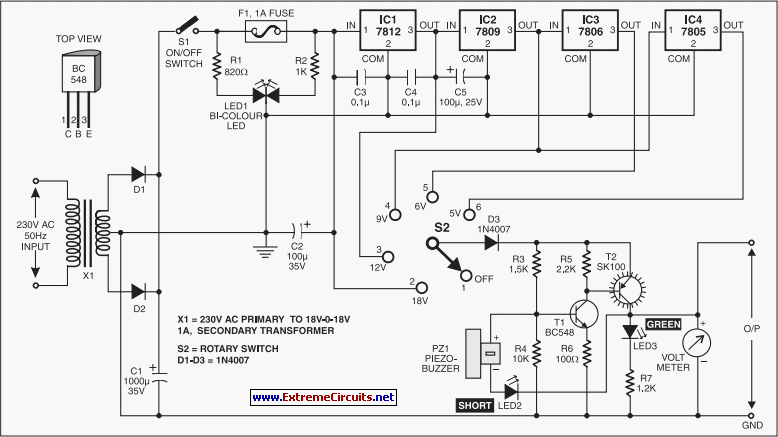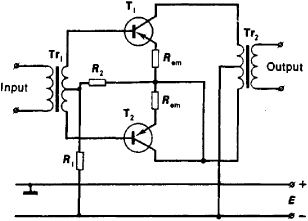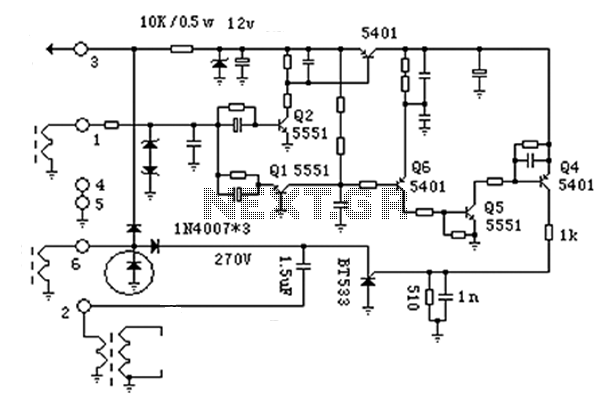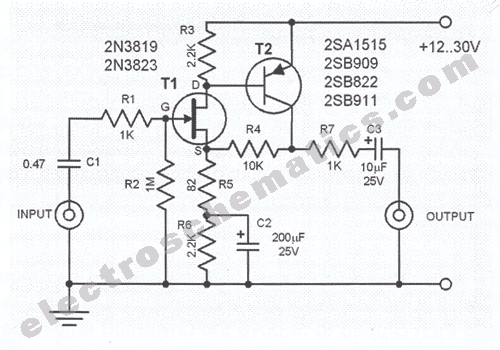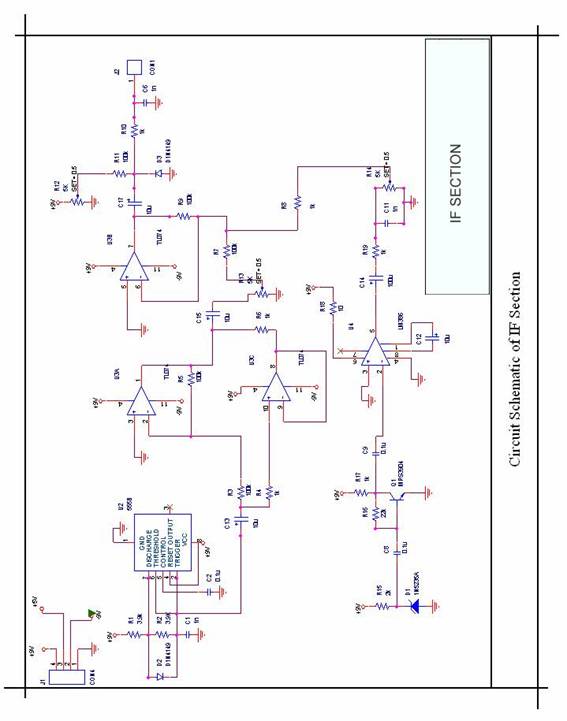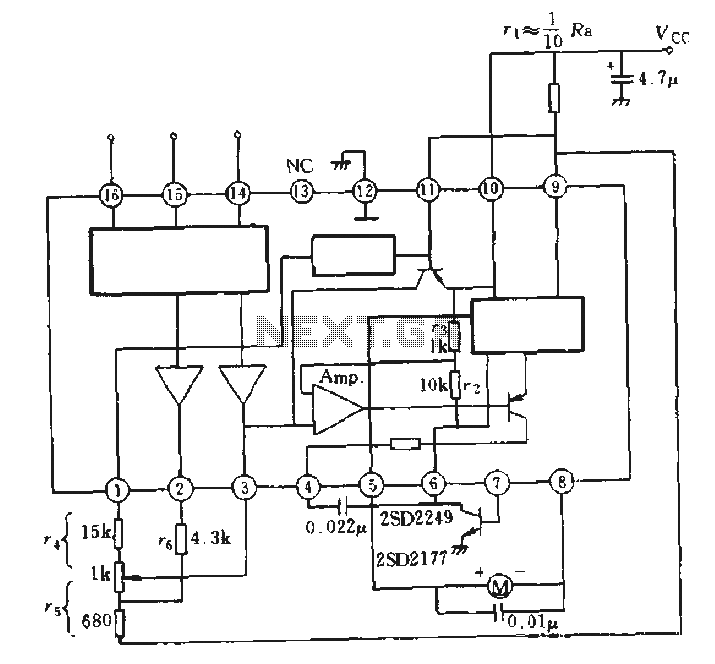
One-Chip Crystal-Controlled Converter Circuit

This circuit operates effectively across a broad frequency spectrum. XTAL 1 serves as a fundamental-frequency crystal. Tl and CI are adjusted to match the input frequency. This circuit can be utilized as a straightforward shortwave converter for AM radios, among other applications. Additionally, a tunable oscillator can be incorporated, as illustrated.
This circuit design features a fundamental-frequency crystal oscillator, which is essential for generating stable frequencies necessary for various applications. The crystal, designated as XTAL 1, is central to the circuit's operation, providing a reference frequency that is both accurate and stable. The tuning components, Tl (likely an inductor) and CI (a capacitor), are strategically selected to resonate at the desired input frequency, allowing for precise frequency adjustments.
In the context of shortwave radio applications, this circuit serves as a converter that shifts incoming radio frequencies to a more manageable range for processing by AM radios. The ability to operate over a wide frequency range makes this circuit versatile, enabling it to handle multiple shortwave bands.
Furthermore, the inclusion of a tunable oscillator enhances the circuit's functionality, allowing users to modify the output frequency dynamically. This flexibility is particularly advantageous for applications that require tuning to different frequencies or for optimizing performance in varying conditions. The oscillator can be designed using various configurations, such as Colpitts or Hartley oscillators, depending on the desired characteristics and complexity of the circuit.
Overall, this circuit exemplifies a practical solution for shortwave radio conversion, leveraging the stability of crystal oscillators and the adaptability of tunable elements to achieve reliable performance across diverse frequency ranges. This circuit can work over a wide range of frequencies. XTAL 1 is a fundamental-frequency crystal. Tl and CI are tuned to the input frequency. An application of this circuit is a simple shortwave converter for AM radios, etc. A tuneable oscillator can also be used, as shown. 🔗 External reference
This circuit design features a fundamental-frequency crystal oscillator, which is essential for generating stable frequencies necessary for various applications. The crystal, designated as XTAL 1, is central to the circuit's operation, providing a reference frequency that is both accurate and stable. The tuning components, Tl (likely an inductor) and CI (a capacitor), are strategically selected to resonate at the desired input frequency, allowing for precise frequency adjustments.
In the context of shortwave radio applications, this circuit serves as a converter that shifts incoming radio frequencies to a more manageable range for processing by AM radios. The ability to operate over a wide frequency range makes this circuit versatile, enabling it to handle multiple shortwave bands.
Furthermore, the inclusion of a tunable oscillator enhances the circuit's functionality, allowing users to modify the output frequency dynamically. This flexibility is particularly advantageous for applications that require tuning to different frequencies or for optimizing performance in varying conditions. The oscillator can be designed using various configurations, such as Colpitts or Hartley oscillators, depending on the desired characteristics and complexity of the circuit.
Overall, this circuit exemplifies a practical solution for shortwave radio conversion, leveraging the stability of crystal oscillators and the adaptability of tunable elements to achieve reliable performance across diverse frequency ranges. This circuit can work over a wide range of frequencies. XTAL 1 is a fundamental-frequency crystal. Tl and CI are tuned to the input frequency. An application of this circuit is a simple shortwave converter for AM radios, etc. A tuneable oscillator can also be used, as shown. 🔗 External reference
